Data Collection and Procedural Integrity
1/19
There's no tags or description
Looks like no tags are added yet.
Name | Mastery | Learn | Test | Matching | Spaced |
|---|
No study sessions yet.
20 Terms
Operational Definition
Is clear and specific description of the behavior that allows it to be measured objectively.
Details include…
Observable actions
Frequency
Duration
Intensity
The behavior enabling consistency in data collection

Operational Definition must be …
Clear and specific
Observable and measurable
Repeatable
Objective
The two type of measurement are ….
Continuous and Discontinuous
Continuous
Data collection methods measure every instance of a behavior can occur frequently or over long periods of time
Usually in early stages of therapy
Discontinuous
Data collection system measure only a sample of behavior that occurs during an interval
Frequency
Number of times a specific behavior occurs
Counting each instance of the behavior as it occurs, regardless of how long each instance lasts
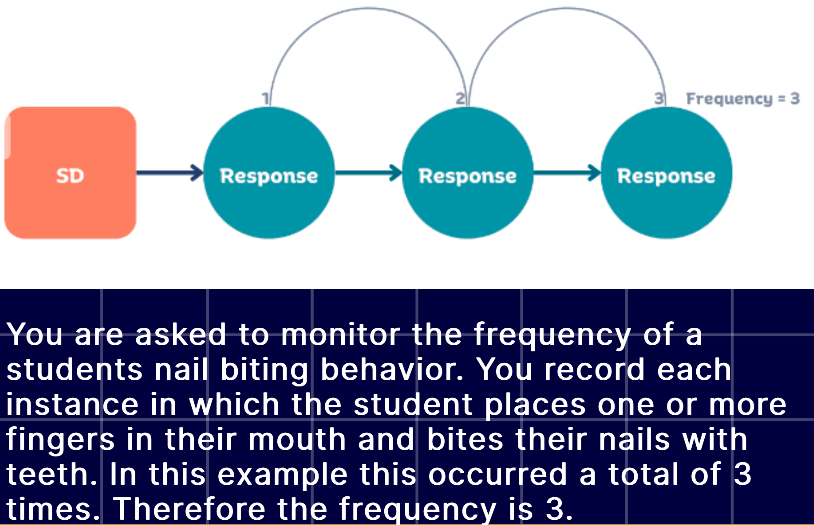
Duration
Measures the amount of time a behavior lasts, from its onset to its termination
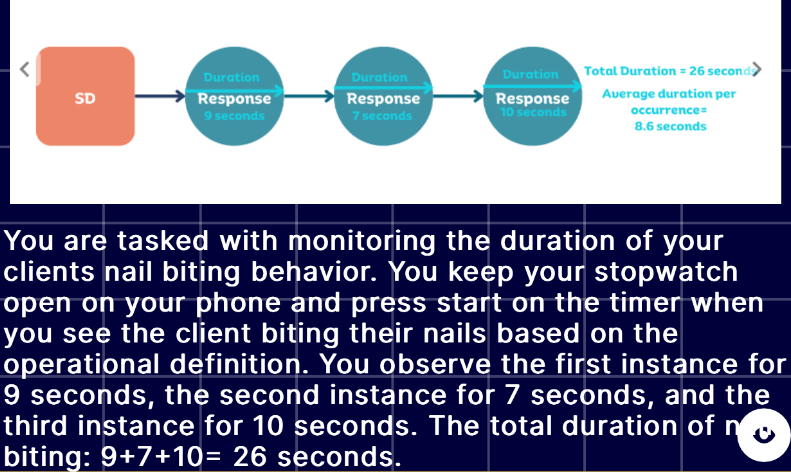
Rate
Measures the frequency of behavior that occurs over a given interval
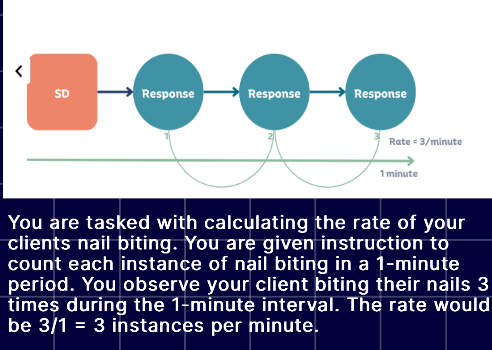
Latency
Amount of time that elapses between a stimulus of cue and the initiation of a response or behavior.
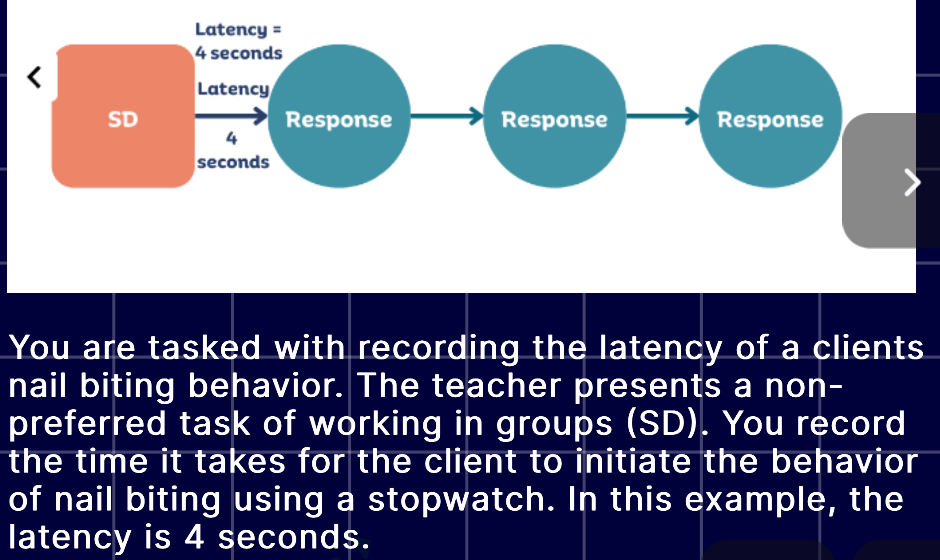
Inter-Response Time (IRT)
Measure the time between consecutive responses or the end of the instance of the behavior and the beginning of the next. Measures how quickly someone engages in multiple instances of the same behavior.
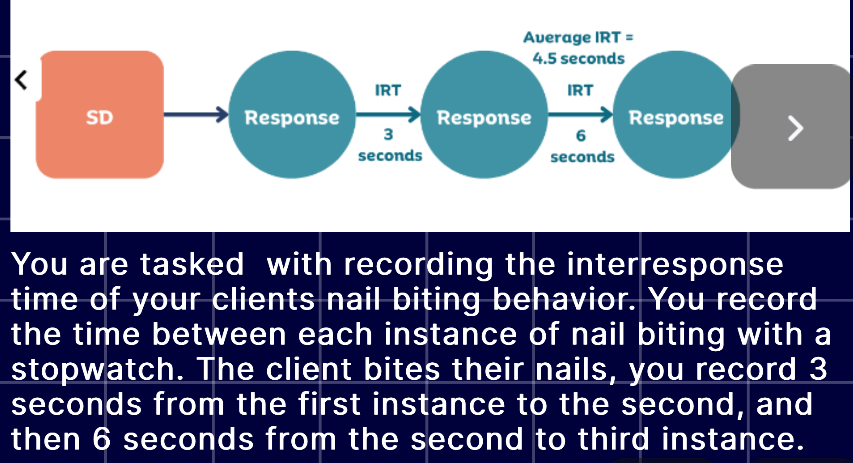
Continuous Measurement used In ABA
Latency
the time between SD and the first response
Duration
how long each response lasted
Frequency
the number of times the response occurred
Rate
the number of times the response occurred over the period of time
Inter-Response Time
represented by the time between responses
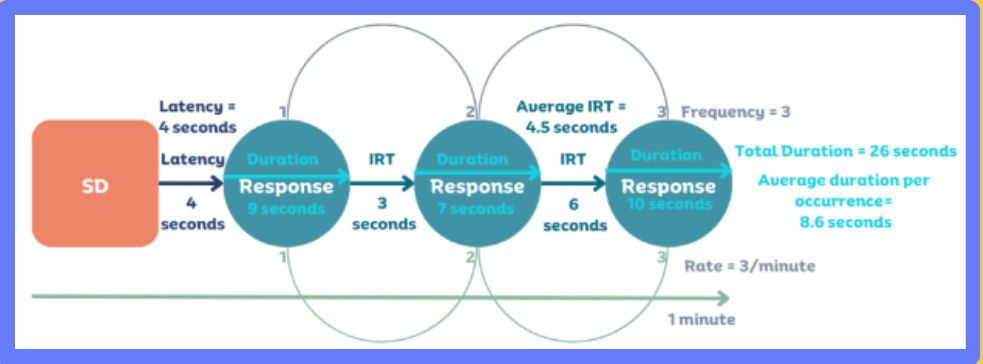
Discontinuous measurement
Involves dividing an observation into intervals and recording whether a behavior occurred during some or all of each interval. Aka interval recording
Types of Discontinuous methods
Interval
Partial
Whole
Momentary Time Sampling
Partial interval ( PIR )
Recording whether the behavior occurred at any point during that interval
behavior does not have a clear start/stop
Behavior occurs at such a high rate that it’s impractical to count each occurrence
An estimate of the frequency of the behavior is acceptable
Whole Interval
Records weather the behavior happens throughout the whole interval
behavior occurs over a long period of time
It’s impractical to use duration recording in your setting
An overestimate of the behavior is acceptable
Momentary time - sampling ( MTS )
Whether or not the behavior occurs, usually at the end of the interval
used when other methods of data collection are impractical in your situation
Preparing for data collection
Understand Behavior Targets
Ask questions
Read data from last session
Determine what programs you plan to work on
Review data collections procedures
Gather materials needed
Other Methods of measurement for discontinuous

Risk of unreliable Data collection
Ineffective intervention
Wasted resources
Ethical concerns
Miscommunication with stakeholders